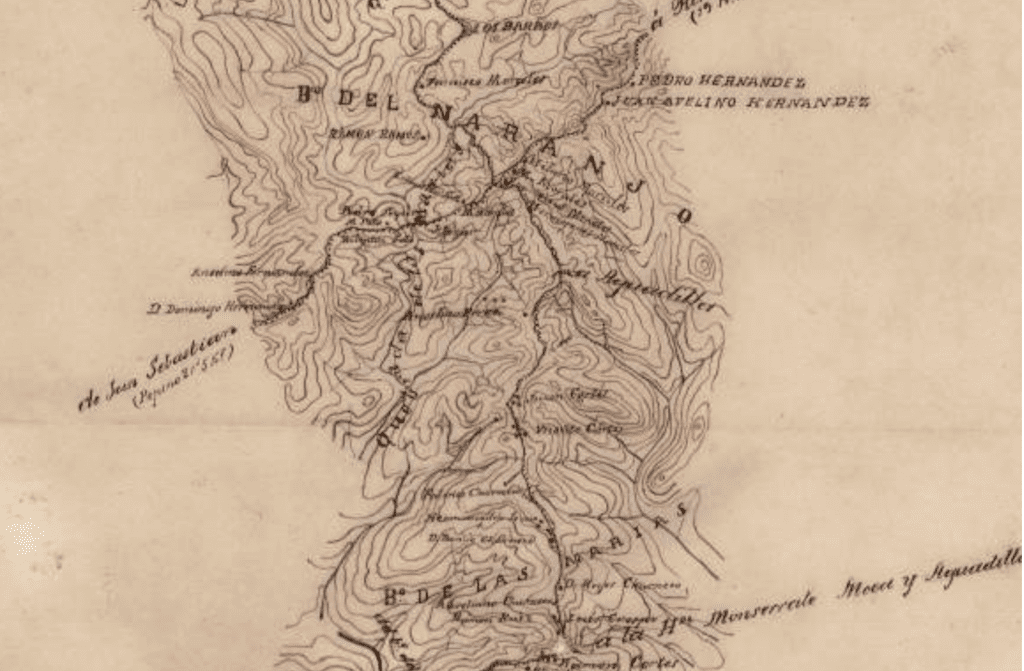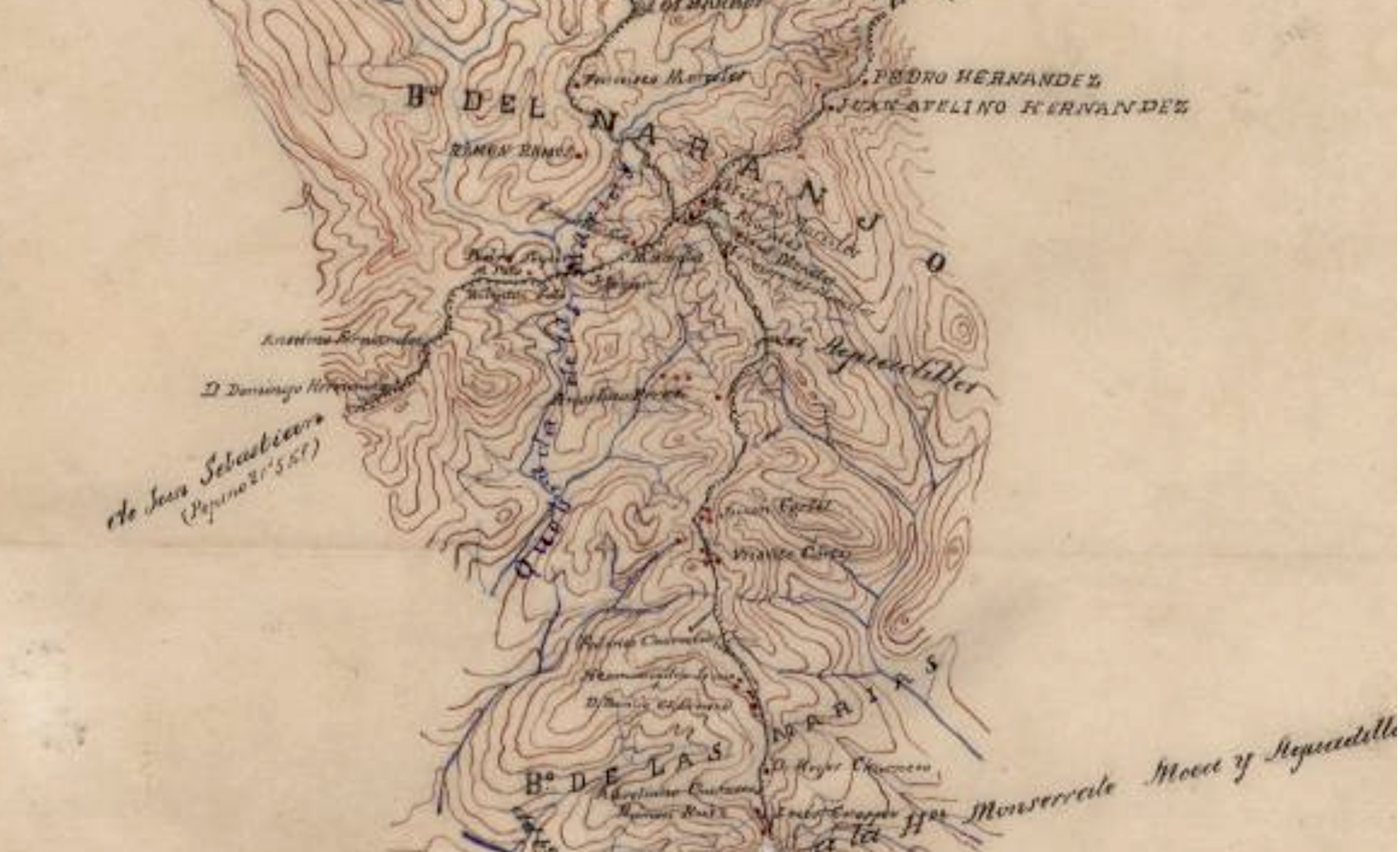
What’s in a name?
How many Jose, Maria and Juans have you come across in your tree? Frequently repeated first names can reflect religious preferences, as in Saints Day names or Marian names. The repetition of names can also be a simple preference due to precedents within families or by popularity.
Sorting out whether a name that keeps cropping up are made up of one or multiple first and last names requires caution as one seeks the supplemental evidence that adds weight to a proof. Even better is locating a document where the informant knew quite a bit about the deceased, to the point of citing several marriages, parents, children or grandparents. There are documents that just begin to knock some brick walls down– and this 1904 document provides just such a moment.
The son who remembered
When Jose Antonio Caban Nieves died in 1904, his son, Lorenzo Caban Babilonia was able to recite the names of all the women in his father’s five marriages. Now both of Lorenzo’s parents were gone, as his father contracted a severe intestinal illness, that resulted in his rapid demise. How long Jose Antonio’s condition lasted went unmentioned in his death certificate. Such details are included in more recent certificates, after 1935.
Wives, children and memory
Jose Antonio Caban Nieves lived long enough to be a 70 year old man who had 16 children, most of whom survived to adulthood. His marriage with Pascasia Babilonia, was likely the longest of all. Remarkably, his son Lorenzo Caban Babilonia (1866-1946) listed the names of the children from each marriage. This also reflects an oral practice of transmitting names and committing them (successfully) to memory, so Lorenzo’s feat was part of learning one’s own family history. We know it’s oral, because at the end of the document, is stated “..firma el Comisonado y los testigos por el declarante no saber firmar, le hace a su ruego..” the Commissioner and witnesses signed on his behalf, because the informant does not know how to write. His father left a will, so there’s additional documentation in the Protocolos Notariales at the Archivo General de Puerto Rico.
As it turns out, NONE of the additional 14 people linked to Jose were indexed in FamilySearch— another reason why it’s worth checking the original document.

- Parents: Marcelo Caban & Ynes Nieves
- First Marriage: Pascasia Babilonia [Quinones]
- 10 children, only 8 mentioned: Lorenzo, Juana, Bibiana, Calista, Ricarda, Anastasio, Juan y Segundino Caban Babilonia.
- Second Marriage: Felipa Marrero [Hernandez]
- 3 children: Cleofe, Adelaida & Antonia Caban Marrero
- Third Marriage: Juana Babilonia [Perez]
- 1 child: Juana Nieves Babilonia
- Fourth Marriage: Evangelista Ortiz [Perez]
No children - Fifth Marriage: Sinforosa Soto [Hernandez]
- 2 children: Luis y Marian Caban Soto
What this also tells us is that childbearing proved deadly for some partners. With so many little ones, a widower’s impulse to find another wife was imperative. Here potential mates seem to be in the area of Barrio Naranjo, where farms and plantations of relatives and associates were nearby. Most people were born at home, and infant mortality was high. These births were not for the most part, attended by doctors but comadronas or midwives, used their knowledge to bring the next generation into the world. By the 1930s, comadronas (midwives) had formal training, although the knowledge of delivering babies was known among women long before. The difference was a decline in the number of mothers lost to infeccion puerperal – puerperal fever.
For his first marriage to Petronila Pascasia Babilonia Quinones (1846-bef 1886), my research revealed there was at least one additional child. Petronila, as she mostly appears in documents, was the daughter of Francisco Babilonia Acevedo & Maria Bibiana Quinones Vives, owners of Sitio de la Ranchera during the time of her birth.
Multiple connections emerge from these marriages and children. His siblings also tended to have large families, without additional marriages. HIs older sister, Evangelista Caban Nieves (1818-1916), who married Jose Soto (ca 1813-1906) and had 15 children with him. His brothers Marcelino (1833-1914) and Manuel de Jesus Caban Nieves (1846-1886) married two sisters, the daughters of d. Antonio Perez Gerena and da. Manuela Babilonia Lorenzo de Acevedo. Marcelino married Cirila Isidra Babilonia Perez ( 1834-1911) with whom he had 11 children. Manuel de Jesus married Damiana Babilonia Perez (ca 1835-1888) they had 6 known children.
If you’re related to them, you’re related to me via Manuela Babilonia Acevedo, my GGG aunt and her parents. There are probably additional links via the Caban and the Nieves lines, as well, however that connection remains to be determined, partially caught in gap of missing records for first decade of the early nineteenth century. Going beyond the transcriptions in search results can definitely offer a researcher advantages.
References
Centro Geográfico del Ejército, Itinerario de Moca a Añasco, 1893. Archivo Digital National de Puerto Rico, https://archivonacional.com/PL/1/1/1385
“Puerto Rico, Registro Civil, 1805-2001,” database with images, FamilySearch (https://familysearch.org/ark:/61903/1:1:QVJD-F8D7 : 17 July 2017), Pascasia Babilonia in entry for José Antonio Caban Y Nieves, 27 Jan 1904; citing Moca, Puerto Rico, oficinas del ciudad, Puerto Rico (city offices, Puerto Rico).
Ellen Fernandez-Sacco, “Don Miguel Babilonia (1743-1823) and his Descendants: From Mallorca, Spain to Moca, Puerto Rico.” Hereditas, 16:1, 2015, 6-47; 35-36. https://bit.ly/2Y31yiT

